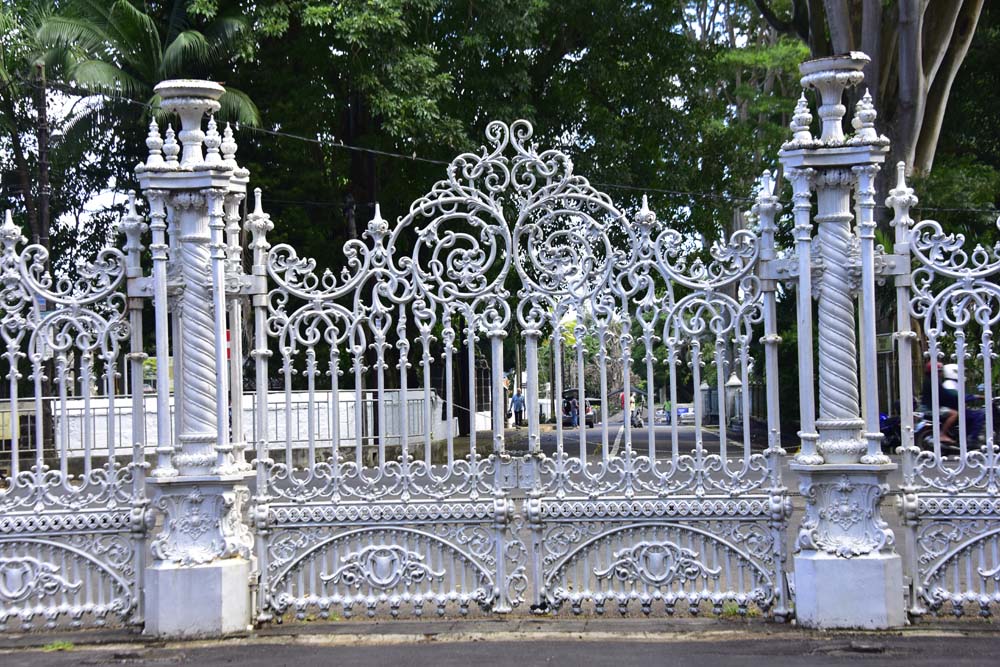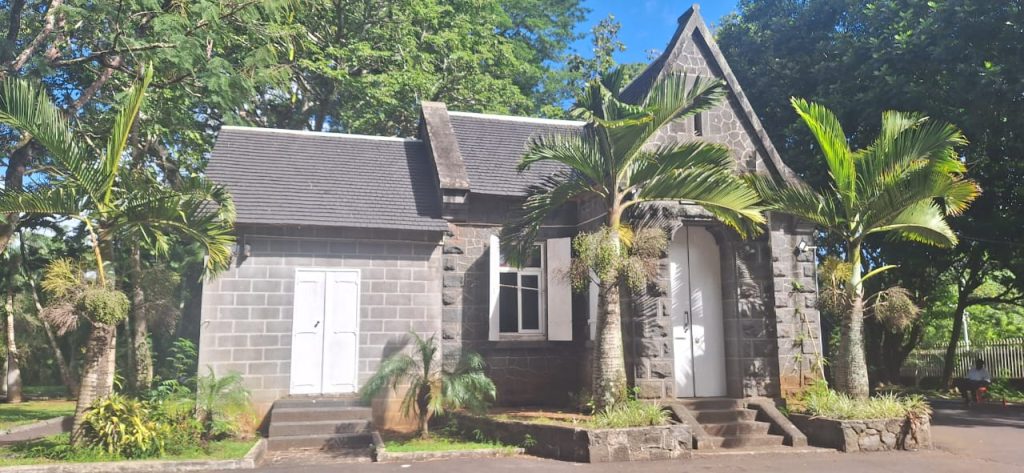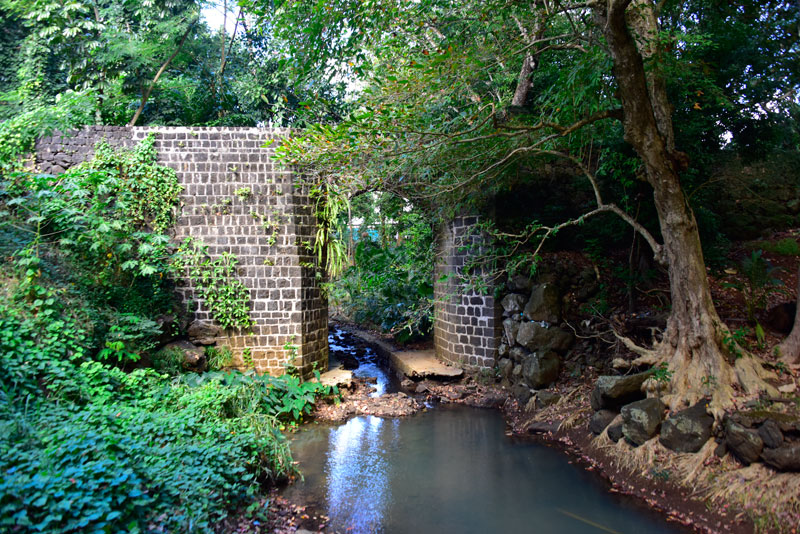
The Main Gate
The Main Gate made of wrought iron is a lovely architectural structure. It was donated by Francois Liénard de la Mivoie. It is located in its present site since 1868. The beauty of the Main Gate is enhanced by the presence of as Coat of Arms, a unicorn and a crown on top of each pillar. In 1862, this structure won the first prize at the International Exhibition held at Crystal Palace in the United Kingdom.
The former gate was transferred and was placed at the entrance of the Supreme Court in Port Louis, where it still stands today.

The Stone Gatehouse
On the right of the main gate is a stone gatehouse which was built during the British period. This building will soon be renovated. The stone wall is covered with a creeping species of fig (Ficus pumila). Immediately behind the gatehouse is a fine specimen of baobab (Adansonia digitata) which is a native of Africa. It was planted in 1772. This species of trees is famous for the great age it may attain and for its girth.
Near to the gatehouse is Adrien d’Epinay Avenue which is lined with the curiously shaped bottle palm (Hyophorbe lagenicaulis). This palm is endemic to Round Island. In its original habitat only about half a dozen plants remain. When young, the palm stem looks more like a demijohn than a bottle.

Pont des Soupirs
The Pont des Soupirs is a unique structure which dates back to the French period. This stone bridge can act as a source of inspiration to the poet or visitor. The rare feature about this Pont des Soupirs is that the river Citron flows under the bridge and at the same time water from Riley Canal flows over it.
Standing on the bridge and looking towards the right, the visitor can view the Albizia caribaea and the Raffia palm (Raphia farinifera).
On the other side of the river, there are two widely planted trees from India, the Goyavier Royal (Lagerstroernia indica) and the Teak (Tectona grandis). The Goyavier Royal with its gorgeous sprays of pink flowers cannot be forgotten once seen; the Teak with large, light green to yellowish green, emery-like leaf is the tree that yields one of the most important commercial timbers of the world. It sheds its leaves for a short time each year.
On the other side of the bridge is a much-branched tree (Cinnamomum camphora) with dark green foliage. When the leaves are bruised, they have strong smell of camphor. It is a native of China where carved boxes and pieces of furniture are made from the wood. Next comes the well-known Indian Almond or Badamier Tree (Terminalia catappa) with large ornamental glossy leaves, which turn bright red and then yellow before they are shed around September. It is a splendid shade tree. The ground is covered with a short (about 1 metre) palm-like plant (Curculigo capitulata) which is used extensively to make bouquets.
The two pillars, at the other end of the bridge, formed part of an old gate, the hinges of which are still there. It led to the site of the former nursery, fernery and residence of the then Director of the Garden. Only a few vestiges of these buildings can be seen to-day.
